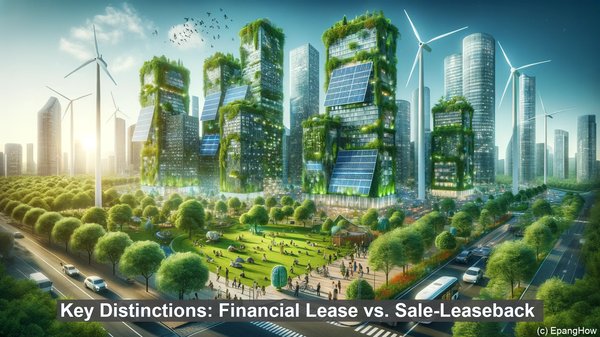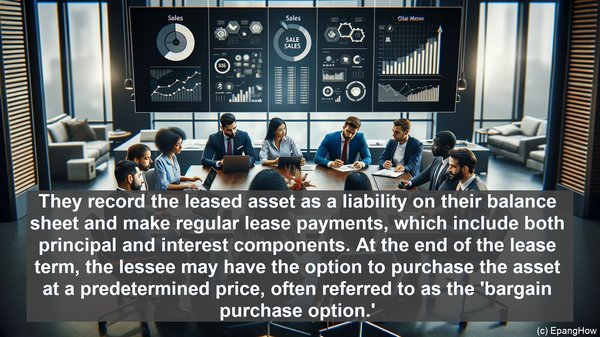Introduction: The Significance of Leasing in Business
Hello everyone! Leasing is a vital aspect of modern business operations. It allows companies to acquire assets without the need for substantial upfront investments. Today, we’ll explore two popular leasing structures: financial leases and sale-leasebacks. While both involve the use of assets, they differ in their fundamental nature and implications. Let’s dive in!

Financial Lease: A Comprehensive Overview
A financial lease, also known as a capital lease, is a long-term arrangement where the lessee (the company leasing the asset) enjoys most of the benefits and risks associated with the asset. In this type of lease, the lessee is essentially the owner for accounting purposes. They record the leased asset as a liability on their balance sheet and make regular lease payments, which include both principal and interest components. At the end of the lease term, the lessee may have the option to purchase the asset at a predetermined price, often referred to as the ‘bargain purchase option.’
Sale-Leaseback: A Unique Transaction
In a sale-leaseback arrangement, the process begins with the company owning the asset. They sell the asset to a third party, known as the lessor, and simultaneously enter into a lease agreement to continue using the asset. The lessor, who now owns the asset, receives the purchase price from the sale, while the lessee becomes the tenant, paying regular lease payments. This structure allows the lessee to unlock the value of the asset while still utilizing it for business operations. Sale-leasebacks are often employed by companies looking to free up capital tied to their assets.

Key Distinctions: Financial Lease vs. Sale-Leaseback
While both financial leases and sale-leasebacks involve leasing assets, there are several key distinctions. Firstly, in a financial lease, the lessee is considered the owner of the asset for accounting purposes, whereas in a sale-leaseback, the lessor becomes the owner. This distinction impacts the balance sheet and financial ratios of the lessee. Additionally, financial leases are typically longer-term arrangements, often spanning the majority of the asset’s useful life. Sale-leasebacks, on the other hand, can be structured for shorter durations. Moreover, financial leases often come with a ‘bargain purchase option,’ enabling the lessee to acquire the asset at the end of the term, while sale-leasebacks do not offer this option.
Benefits and Considerations
Both financial leases and sale-leasebacks offer unique advantages. Financial leases provide the lessee with the benefits of ownership, such as potential tax advantages and the ability to use the asset for its entire useful life. On the other hand, sale-leasebacks can be an effective means of generating capital for the lessee, as they allow for the monetization of existing assets. However, it’s essential to consider factors such as the impact on financial statements, cash flow, and the specific needs and goals of the business when deciding between the two structures.
